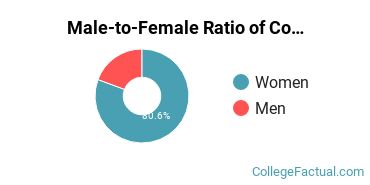 by our College Data Analytics Team
by our College Data Analytics TeamCommunity Organization & Advocacy is a concentration offered under the community organization and advocacy major at Prescott College. We’ve pulled together some essential information you should know about the master’s degree program in community organization, including how many students graduate each year, the ethnic diversity of these students, whether or not the degree is offered online, and more.
You can jump to any section of this page using the links below:
Learn about start dates, transferring credits, availability of financial aid, and more by contacting the universities below.
MS in Organizational Leadership
Managing and motivating individuals and teams within the workplace takes a manager with effective leadership strategies and techniques.
During the 2019-2020 academic year, part-time graduate students at Prescot College paid an average of $0 per credit hour. No discount was available for in-state students. The following table shows the average full-time tuition and fees for graduate student.
| In State | Out of State | |
|---|---|---|
| Tuition | $14,880 | $14,880 |
| Fees | $495 | $495 |
Prescot College does not offer an online option for its community organization master’s degree program at this time. To see if the school offers distance learning options in other areas, visit the Prescot College Online Learning page.
Women made up around 80.6% of the community organization students who took home a master’s degree in 2019-2020. This is higher than the nationwide number of 76.7%.

Around 16.1% of community organization master’s degree recipients at Prescot College in 2019-2020 were awarded to racial-ethnic minorities*. This is lower than the nationwide number of 32%.

| Race/Ethnicity | Number of Students |
|---|---|
| Asian | 1 |
| Black or African American | 0 |
| Hispanic or Latino | 1 |
| Native American or Alaska Native | 0 |
| Native Hawaiian or Pacific Islander | 1 |
| White | 20 |
| International Students | 0 |
| Other Races/Ethnicities | 8 |
*The racial-ethnic minorities count is calculated by taking the total number of students and subtracting white students, international students, and students whose race/ethnicity was unknown. This number is then divided by the total number of students at the school to obtain the racial-ethnic minorities percentage.
More about our data sources and methodologies.